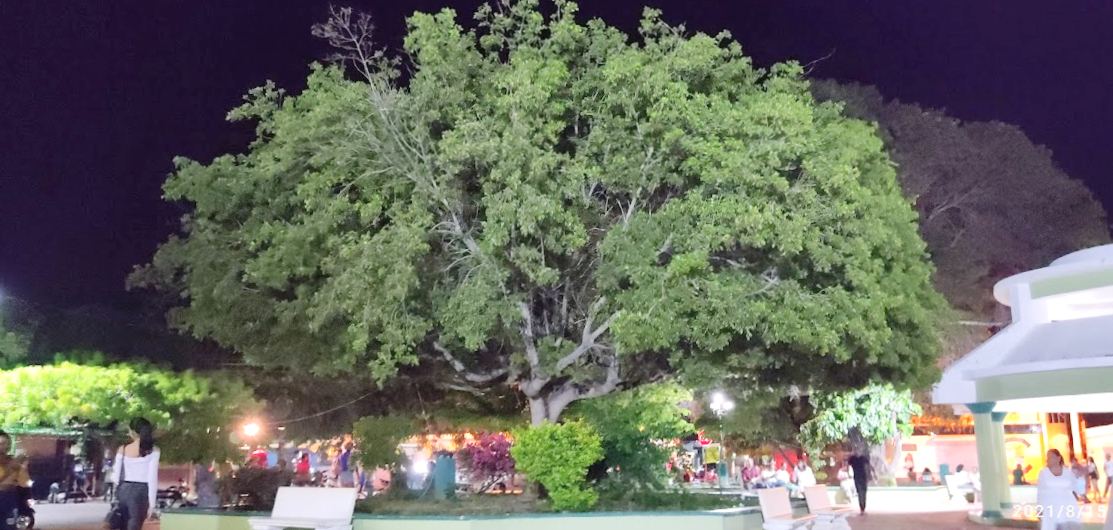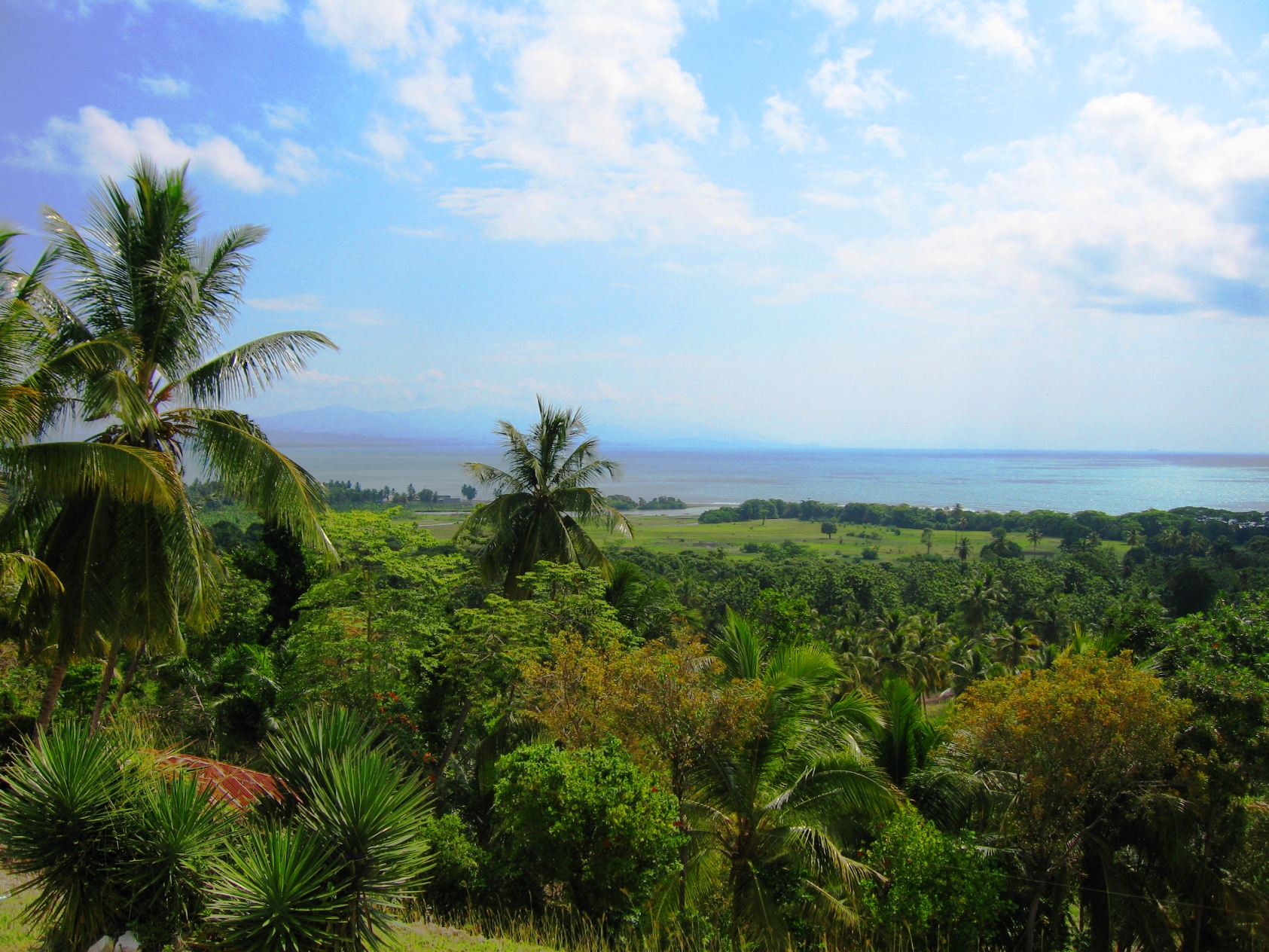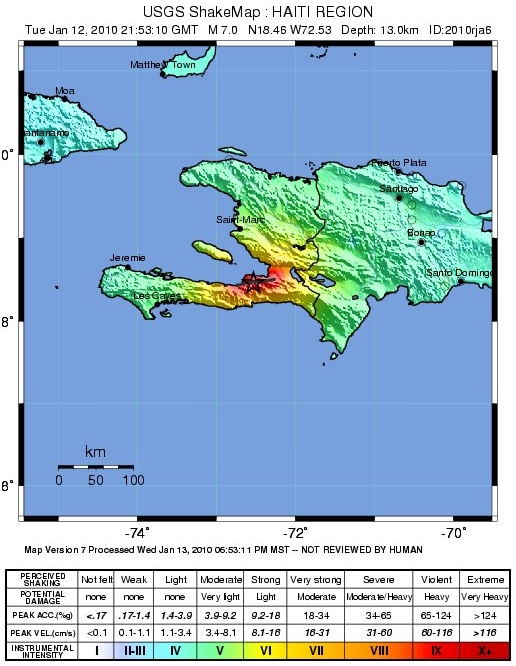|
Sud-Est (department)
Sud-Est ( French, ) or Sidès (Haitian Creole; both meaning "South East") is one of the ten departments of Haiti located in southern Haiti. It has an area of 2,034.10 km2 and a population of 632,601 (2015). Its capital is Jacmel. History Taino Period The department is part of the '' Xaragua kasika'' under the leadership of Bohecio and Anacaona. The settlement of Yakimèl was in the area of actual Jacmel City. Spanish Period Jacmel is one of the earliest Spanish towns in the Caribbean when it was settled by Nicolas Ovando in 1504. French Period One year after the Treaty of Ryswick, the French formally settle the city through La Compagnie de St-Domingue. Haitian Period Haitian Revolution Like many of the actual departments in Haiti, by 1791, the different social classes of St-Domingue started rebelling against the status quo. The enslaved under the leadership of Romaine-La-Prophétesse, a mulatto coffee plantation owner, asked for the abolition of slavery and liberty ... [...More Info...] [...Related Items...] OR: [Wikipedia] [Google] [Baidu] |
Departments Of Haiti
In the administrative divisions of Haiti, the department (, ; ) is the first of four levels of government. Haiti is divided administratively into ten departments, which are further subdivided into 42 arrondissements, 145 communes, and 571 communal sections. In 2014, there was a proposal by the Chamber of Deputies to increase the number of departments from 10 to 14 —perhaps as high as 16. Administration Each departement has a departmental council (''conseil départemental'') compound of three members elected by the departmental assembly for a 4-year term. The departmental council is led by a president (''président''). The council is the executive organ of the department. Each department has a departmental assembly who assists the council in its work. The departmental assembly is the deliberative organ of the department. The members of the departmental assembly are also elected for 4 years. The departmental assembly is led by a president. History Three Departments ... [...More Info...] [...Related Items...] OR: [Wikipedia] [Google] [Baidu] |
Toussaint Louverture
François-Dominique Toussaint Louverture (, ) also known as Toussaint L'Ouverture or Toussaint Bréda (20 May 1743 – 7 April 1803), was a Haitian general and the most prominent leader of the Haitian Revolution. During his life, Louverture first fought and allied with Spanish forces against Saint-Domingue Royalists, then joined with Republican France, becoming Governor-General-for-life of Saint-Domingue, and lastly fought against Bonaparte's republican troops. As a revolutionary leader, Louverture displayed military and political acumen that helped transform the fledgling slave rebellion into a revolutionary movement. Along with Jean-Jacques Dessalines, Louverture is now known as one of the "Fathers of Haiti". Toussaint Louverture was born as a slave in the French colony of Saint-Domingue, now known as Haiti. He was a devout Catholic, and was manumitted as an ''affranchi'' (ex-slave) before the French Revolution, identifying as a Creole for the greater part of hi ... [...More Info...] [...Related Items...] OR: [Wikipedia] [Google] [Baidu] |
Pedernales, Dominican Republic
The Dominican Republic, Dominican city of Pedernales is the capital of the Pedernales Province, in the Dominican Republic. It is located in the southwest of the country, on the Dominican Republic–Haiti border, and has a crossing to the Haitian town of Anse-à-Pitres. National Parks * Parque Nacional Jaragua * Sierra de Bahoruco, Parque Nacional Sierra de Bahoruco These two parks, along with Lake Enriquillo and adjoining zones of the Municipality Pedernales, form the first biosphere reserve in the country. History The official foundation of the colony of Pedernales came about in the year 1927 during the Government of Horacio Vásquez, who appointed as Administrator the well-known writer Sócrates Nolasco. The colonists came mostly from Duvergé. The first one was Mr. Genaro Pérez Rocha, a prosperous rancher, who would later bring the first resident families who came from Duvergé. In the year 1937 the highway was built to join this locality and Oviedo, in whose buildin ... [...More Info...] [...Related Items...] OR: [Wikipedia] [Google] [Baidu] |
Caribbean Sea
The Caribbean Sea is a sea of the Atlantic Ocean, North Atlantic Ocean in the tropics of the Western Hemisphere, located south of the Gulf of Mexico and southwest of the Sargasso Sea. It is bounded by the Greater Antilles to the north from Cuba to Puerto Rico, the Lesser Antilles to the east from the Virgin Islands to Trinidad and Tobago, South America to the south from the Venezuela, Venezuelan coastline to the Colombia, Colombian coastline, and Central America and the Yucatán Peninsula to the west from Panama to Mexico. The Geopolitics, geopolitical region around the Caribbean Sea, including the numerous islands of the West Indies and adjacent coastal areas in the mainland of the Americas, is known as the Caribbean. The Caribbean Sea is one of the largest seas on Earth and has an area of about . The sea's deepest point is the Cayman Trough, between the Cayman Islands and Jamaica, at below sea level. The Caribbean coastline has many gulfs and bays: the Gulf of Gonâve, the Gul ... [...More Info...] [...Related Items...] OR: [Wikipedia] [Google] [Baidu] |
Sud (department)
Sud ( French, ) or Sid (Haitian Creole; both meaning "South") is one of the ten departments of Haiti and located in southern Haiti. It has an area of and a population of 774,976. Its capital is Les Cayes. History Taino Period The department was part of the Xaragua kingdom. The area of Aquin was known as Yakimo a Taino settlement. The island of Vache was named Anigua. Spanish Period The area of Les Cayes was a Spanish settlement known as Salvatierra de la Sabana or Land Saved from the Water or Sea. French Period Much like the N-O, the South Department was a pirate hub with famous pirates such as Henri Morgan and many more hiding their loot on the multitude of islands from Grosse Cayes to Isle-à-Vache. Haitian Revolution The South, in general, was Rigaudin since was under the control of André Rigaud until it definitely switches the hand of Toussaint and the Louverturien. This conflict is known as the Haitian War of Knives opposing two political and economical groups in H ... [...More Info...] [...Related Items...] OR: [Wikipedia] [Google] [Baidu] |
Ouest (department)
Ouest (French language, French, ) or Lwès (Haitian Creole; both meaning "West") is one of the ten departments of Haiti. It is located in south-central Haiti, linking the Great-North and the Tiburon Peninsula. It is the jurisdictional seat of the national capital, the city of Port-au-Prince. It has an area of and a population of 4,029,705 (2015 estimate), making it both the largest department by area and the most populated department in Haiti. History Taino period The department was part of the Jaragua, Hispaniola, Xaragua kasika under the leadership of Anacaona. There are many native settlements in the department notably around Arcahaie, Arcahaie, Ouest, Akaya, Etang Saumâtre, Azuei Lake, Léogâne, Yaguana, the Gonâve Island, island of Guanabo and Petit-Goâve, Goava. It is understood that the Azuei Plaine region was used as a hunting ground for the natives. The island of Gonave is the last point of refuge for the Taino natives. Spanish period One of the only Spanish set ... [...More Info...] [...Related Items...] OR: [Wikipedia] [Google] [Baidu] |
Gran Colombia
Gran Colombia (, "Great Colombia"), also known as Greater Colombia and officially the Republic of Colombia (Spanish language, Spanish: ''República de Colombia''), was a state that encompassed much of northern South America and parts of Central America from 1819 to 1831. It included present-day Colombia, mainland Ecuador (i.e. excluding the Galápagos Islands), Panama, and Venezuela, along with the Caribbean coasts of Nicaragua and Costa Rica, parts of northern Peru, northwestern Brazil, and Guyana–Venezuela territorial dispute, claimed the Essequibo region. The terms Gran Colombia and Greater Colombia are used historiography, historiographically to distinguish it from the current Colombia, Republic of Colombia, which is also the official name of the former state. However, Diplomatic recognition, international recognition of the legitimacy of the Gran Colombian state ran afoul of European opposition to the independence of states in the Americas. Austrian Empire, Austria, Bourb ... [...More Info...] [...Related Items...] OR: [Wikipedia] [Google] [Baidu] |
Simón Bolívar
Simón José Antonio de la Santísima Trinidad Bolívar y Palacios (24July 178317December 1830) was a Venezuelan statesman and military officer who led what are currently the countries of Colombia, Venezuela, Ecuador, Peru, Panama, and Bolivia to independence from the Spanish Empire. He is known colloquially as ''El Libertador'', or the ''Liberator of America''. Simón Bolívar was born in Caracas in the Captaincy General of Venezuela into a wealthy family of American-born Spaniards (Criollo people, criollo) but lost both parents as a child. Bolívar was educated abroad and lived in Spain, as was common for men of upper-class families in his day. While living in Madrid from 1800 to 1802, he was introduced to Enlightenment philosophy and married María Teresa Rodríguez del Toro y Alaysa, who died in Venezuela from yellow fever in 1803. From 1803 to 1805, Bolívar embarked on a Grand Tour that ended in Rome, where he swore to end the Spanish America, Spanish rule in the Amer ... [...More Info...] [...Related Items...] OR: [Wikipedia] [Google] [Baidu] |
Henri Christophe
Henri Christophe (; 6 October 1767 – 8 October 1820) was a key leader in the Haitian Revolution and the only monarch of the Kingdom of Haiti. Born in the British West Indies, British Caribbean, Christophe was possibly of Senegambian descent. Beginning with the slave uprising of 1791, he rose to power in the ranks of the Haitian revolutionary military. The revolution succeeded in gaining independence from France in 1804. In 1805 he took part under Jean-Jacques Dessalines in the capture of Era de Francia, Santo Domingo (now Dominican Republic), against French forces who acquired the colony from Spain in the Peace of Basel, Treaty of Basel. After Dessalines was assassinated, Christophe retreated to the Plaine-du-Nord and created a separate government. On 17 February 1807, he was elected President of Haïti, president of the State of Haiti, as he named that area. Alexandre Pétion was elected president of the Republic of Haiti (1806–1820), Republic of Haiti in the south. On 26 ... [...More Info...] [...Related Items...] OR: [Wikipedia] [Google] [Baidu] |
Haitian Declaration Of Independence
The Haitian Declaration of Independence () was proclaimed on 1 January 1804 in the port city of Gonaïves by Jean-Jacques Dessalines, marking the end of 13-year long Haitian Revolution. The declaration marked Haiti becoming the first independent nation of Latin America and the Caribbean, only the second in the Americas after the United States. Notably, the Haitian declaration of independence signalled the culmination of the only successful slave revolution in history. Only two copies of the original printed version exist. Both of these were discovered by Julia Gaffield, a Duke University postgraduate student, in the UK National Archives in 2010 and 2011. They are currently held by The National Archives, Kew. The declaration itself is a three-part document. The longest section, "Le Général en Chef Au Peuple d’Hayti", which is known as the "proclamation," functions as a prologue. It has one signatory, Jean-Jacques Dessalines, the senior general and a former slave. Due to Dess ... [...More Info...] [...Related Items...] OR: [Wikipedia] [Google] [Baidu] |
Magloire Ambroise
Magloire Ambroise (1774 in Jacmel, Saint-Domingue – December 7, 1807 in Port-au-Prince), was a hero of the Haitian Independence. His military career began in the colonial army. Life During the War of Knives between Toussaint Louverture in the North against the mulattoes leader André Rigaud in the South (1799–1801), Magloire saved the lives of hundred of respected families in Jacmel. As a result, he was regarded as a hero by the people of that town at this time. In 1802, Jean-Jacques Dessalines named him commander of Jacmel. However, the French troops captured the town as they did in many towns in the country at that time. In 1803, Magloire Ambroise put a siege in Jacmel. The siege was over on October 17, 1803, when the French troops surrendered and were allowed by Magloire's troops to board a British warship. In 1804, Magloire Ambroise was one of the generals who signed the independence act. In February 1806, by the order of Dessalines, Magloire Ambroise received Francisco d ... [...More Info...] [...Related Items...] OR: [Wikipedia] [Google] [Baidu] |





